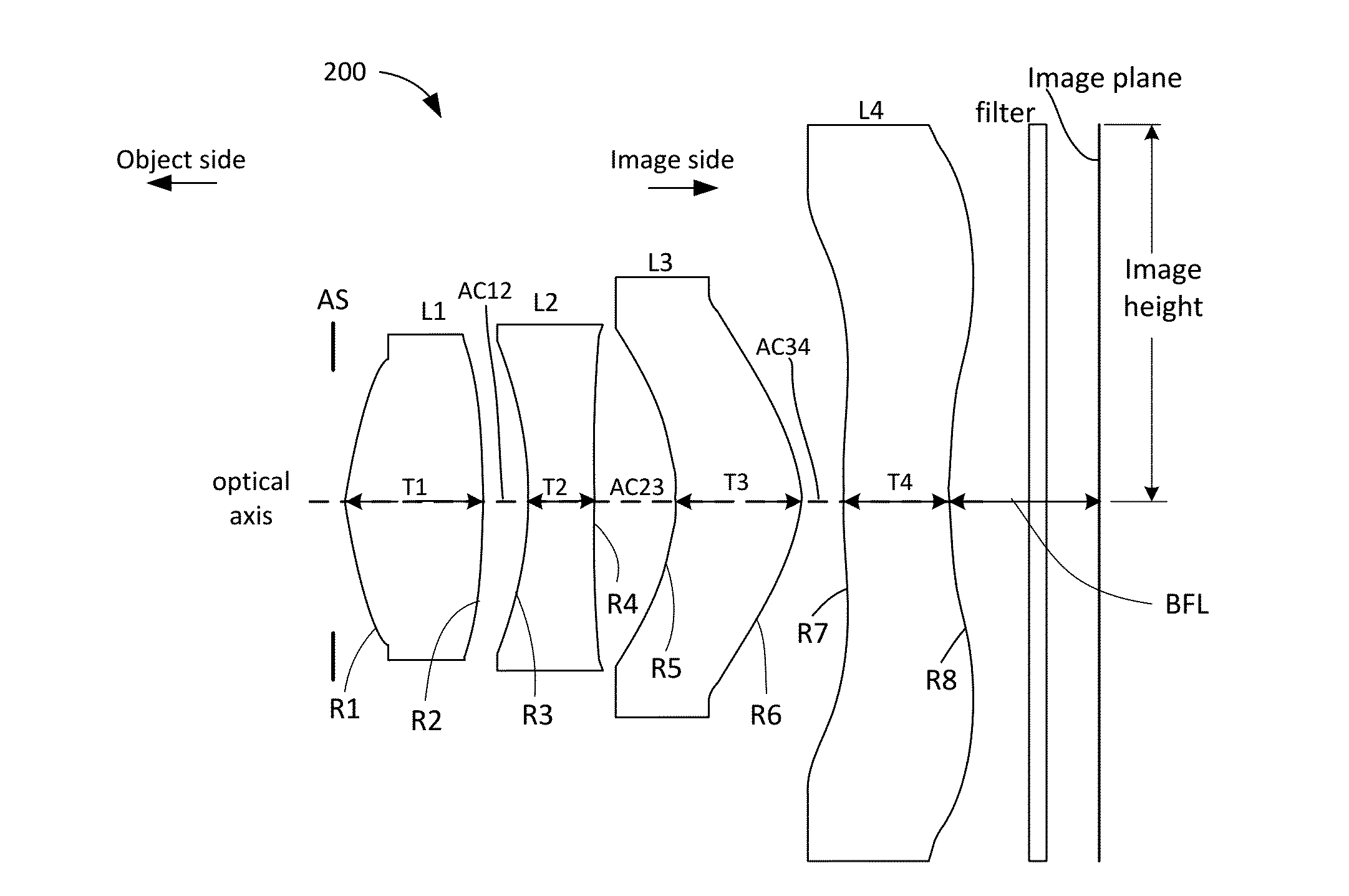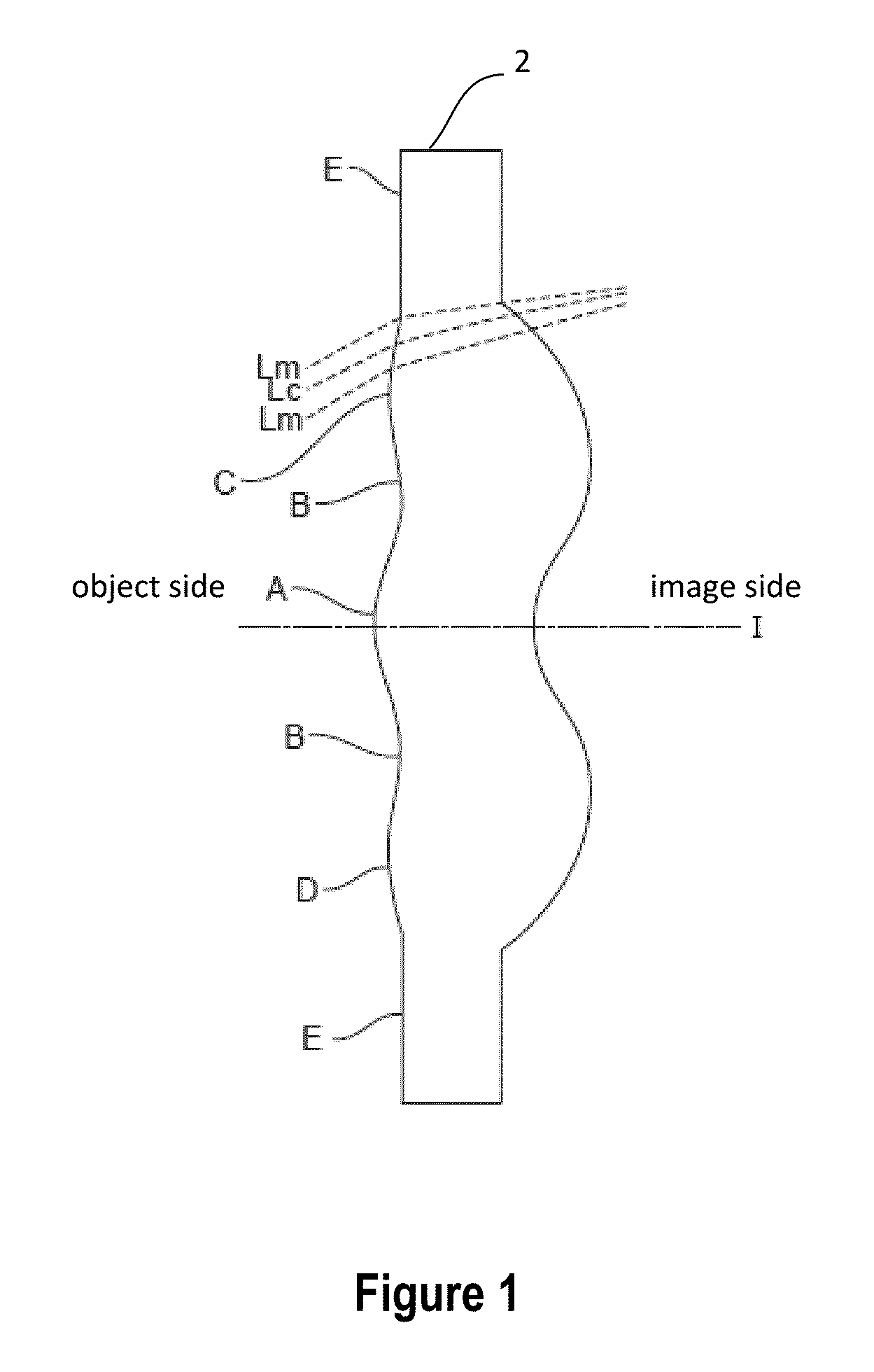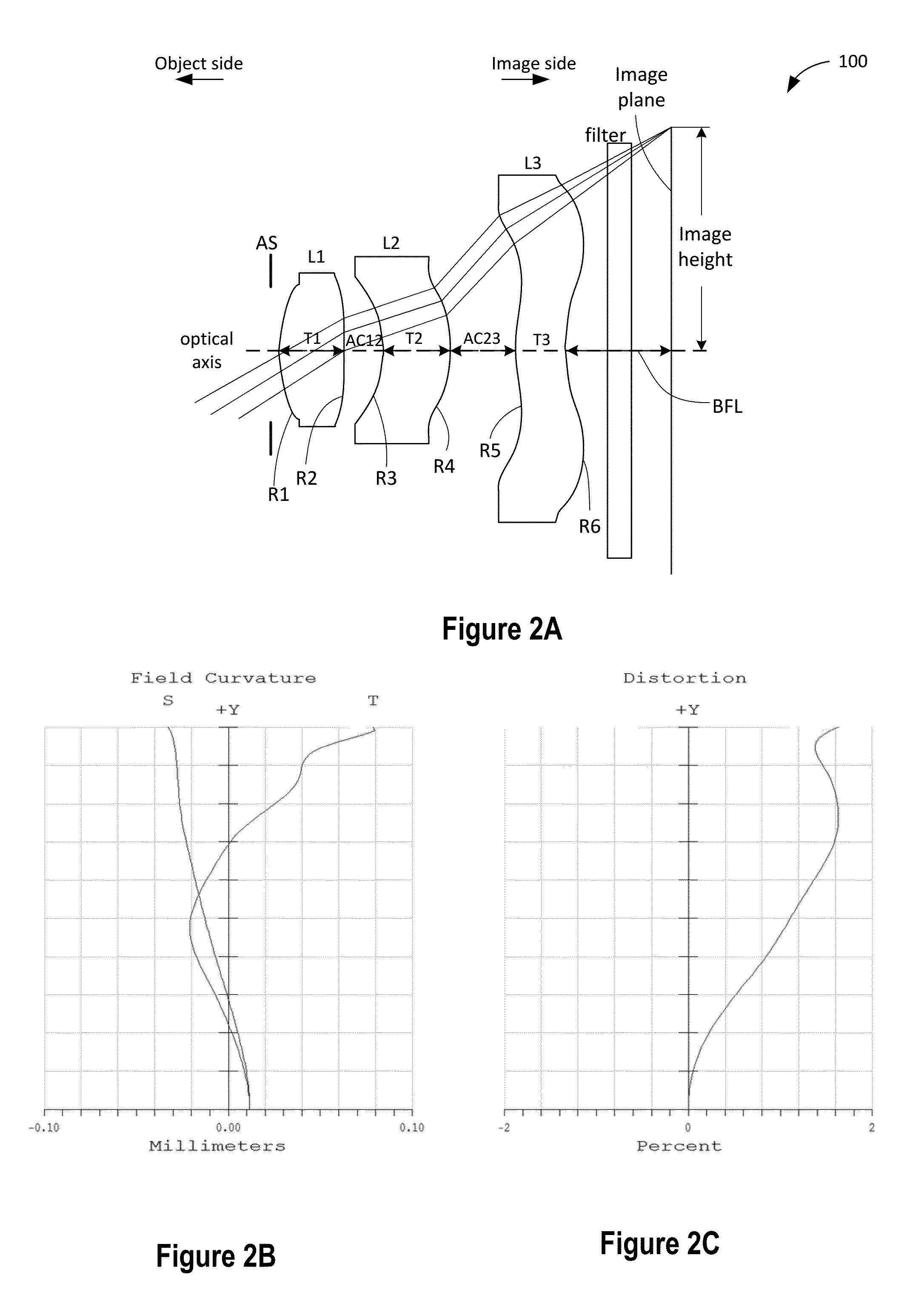Near-infrared lens for cameras in mobile devices
a technology of infrared and mobile devices, applied in the field of optical imaging lens systems, can solve the problems that the optical imaging lens system's size reduction must also take into account optical performance requirements
- Summary
- Abstract
- Description
- Claims
- Application Information
AI Technical Summary
Benefits of technology
Problems solved by technology
Method used
Image
Examples
first embodiment
[0052]FIG. 2A is a simplified cross-section view of a three-element optical lens system 100 according to a first embodiment of the present invention. Optical lens system 100 comprises a first lens element L1, a second lens element L2, and a third lens element L3, in order from the object side to the image side along the optical axis. Each lens element L1-L3 can be rotationally symmetric above the optical axis.
[0053]First lens element L1 has a positive refractive power, a convex object-side surface, a convex image-side surface in the outer circumferential region, and a convex image-side surface in the vicinity of the optical axis. Second lens element L2 has a negative refractive power, a concave object-side surface in the vicinity of the optical axis, a concave object-side surface in the outer circumferential region, a convex image-side surface in the vicinity of the optical axis, and a convex image-side surface in the outer circumferential region. Third lens element L3 has a positiv...
second embodiment
[0066]Table 2A shows numeric lens data of the lens elements of optical lens system 100 according to a second embodiment of the present invention. All three lens elements are made of the polycarbonate plastic material SP3810.
TABLE 2ACurvatureRadiusRadiusThickness / air gapRefractive(1 / mm)(mm)(mm)indexAbbe #materialObjectInfinity14400Aperture stopInfinity−0.1275Lens 18.40E−011.1904290.511.63975323.35202SP38108.69E−0211.504110.25357Lens 2−7.97E−01 −1.254710.5246341.63975323.35202SP3810−6.66E−01 −1.502170.572298Lens 37.85E−011.2741210.351.63975323.35202SP38101.16E+000.8592370.36filterInfinity0.211.5264.2Infinity0.3Image planeInfinity0
[0067]In the second embodiment, the effective focal length (EFL) is 2.5631 mm, the half field of view (HFOV) is 36.1 degrees. The F number is 2.19. The image height is 1.87 mm. The BFL is 0.87 mm. The entire length of the optical system 100 measured from the object-side surface of the first lens element to the image plane is 3.081 mm. The angular magnificatio...
third embodiment
[0071]FIG. 3A is a simplified cross sectional view of a four-element optical lens system 200 according to an embodiment of the present invention. Optical lens system 200 includes an aperture stop AS, a first lens element L1, a second lens element L2, a third lens element L3, and a fourth lens element L4, in order from the object side to the image side along the optical axis. Each lens element L1-L4 can be rotationally symmetric above the optical axis.
[0072]First lens element L1 has a positive refractive power, a convex object-side surface, a convex image-side surface in the outer circumferential region, and a concave image-side surface in the vicinity of the optical axis. Second lens element L2 has a negative refractive power, a concave object-side surface in the vicinity of the optical axis, a concave object-side surface in the outer circumferential region, a concave image-side surface in the outer circumferential region, and a concave image side surface in the vicinity of the opti...
PUM
 Login to View More
Login to View More Abstract
Description
Claims
Application Information
 Login to View More
Login to View More - R&D
- Intellectual Property
- Life Sciences
- Materials
- Tech Scout
- Unparalleled Data Quality
- Higher Quality Content
- 60% Fewer Hallucinations
Browse by: Latest US Patents, China's latest patents, Technical Efficacy Thesaurus, Application Domain, Technology Topic, Popular Technical Reports.
© 2025 PatSnap. All rights reserved.Legal|Privacy policy|Modern Slavery Act Transparency Statement|Sitemap|About US| Contact US: help@patsnap.com



